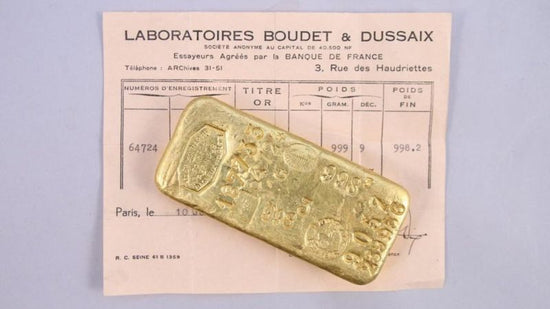Described by the Aztecs as the excrement of the gods, by the Incas as the sweat of the sun, and coveted in myths and legends, gold has compelled mankind for six millennia though its transcendental and timeless allure. Within jewellery, gold comes in many different colours, most popularly, yellow, white or rose gold. This is achieved by combining pure gold with different alloys such as copper and silver. At LYLIE, we salvage gold from clients’ unwanted scrap using our Gold Exchange, to create sustainable jewellery tailored to your carat and colour of choice.

Gold Carat
In its pure form, gold is extremely soft and malleable, so must be mixed with other metals such as silver, copper, zinc and palladium to make it workable in jewellery. This process is called alloying. The carat (ct) tells you how many parts of pure gold to metal alloy there are. This is not to be confused with the carat weight of diamonds and gemstones. Gold purity is measured in parts per thousand. Within the UK, 9ct, 14ct, and 18ct are commonly used in jewellery. These carats are broken down as follows:
375 - 9ct gold contains 37.5% pure gold and the rest alloy (375 parts per thousand). Recognised by hallmark ‘375’.
585 - 14ct gold contains 58.5% pure gold and the rest alloy (585 parts per thousand). Recognised by hallmark ‘585’.
750 - 18ct gold contains 75% pure gold and the rest alloy (750 parts per thousand). Recognised by hallmark ‘750’.
999 - 24ct, pure gold, is generally too soft for jewellery purposes, particularly anything for everyday wear.

Gold Colour
Whilst yellow gold tends to be the most popular in jewellery, by mixing gold with other alloys, we can create white gold and rose gold, which some may find more flattering for their skin tone.
YELLOW GOLD - For yellow gold jewellery, copper and silver are added to increase its durability and strength. The proportion of pure gold to these alloys determines its shade. The higher the carat, i.e. the purer the gold, the yellower and richer the colour.
ROSE GOLD - Also known as red gold or pink gold, this shade became popular in Russia at the beginning of the 19th century and is commonly referred to as Russian gold. To produce its pink tone, copper is added to gold. The higher the copper content, the pinker the colour. So, 9ct is markedly pinker than 18ct rose gold.
WHITE GOLD - Usually achieved by combining pure gold with palladium, silver and zinc, white gold is not white like platinum but more of a light grey steel colour. Nowadays, jewellers commonly plate white gold with rhodium (a member of the platinum family) to brighten its colour. However, we would advise against this, as it’s harmful to the environment and requires regular re-plating.

GOLD DIPPED - Gold dipped is the term we use for a layer of gold plate over sterling silver, other jewellers may refer to this as gold vermeil. The number of gold microns denotes the plate’s thickness. Whilst the industry standard is 1-3 microns of plating, at LYLIE we dip our jewellery in 5 microns of 9ct gold, providing a thicker and harder wearing plate.

More information on gold hallmarks here.
Words
Eliza Walter
Images
Danae Papazymouri












